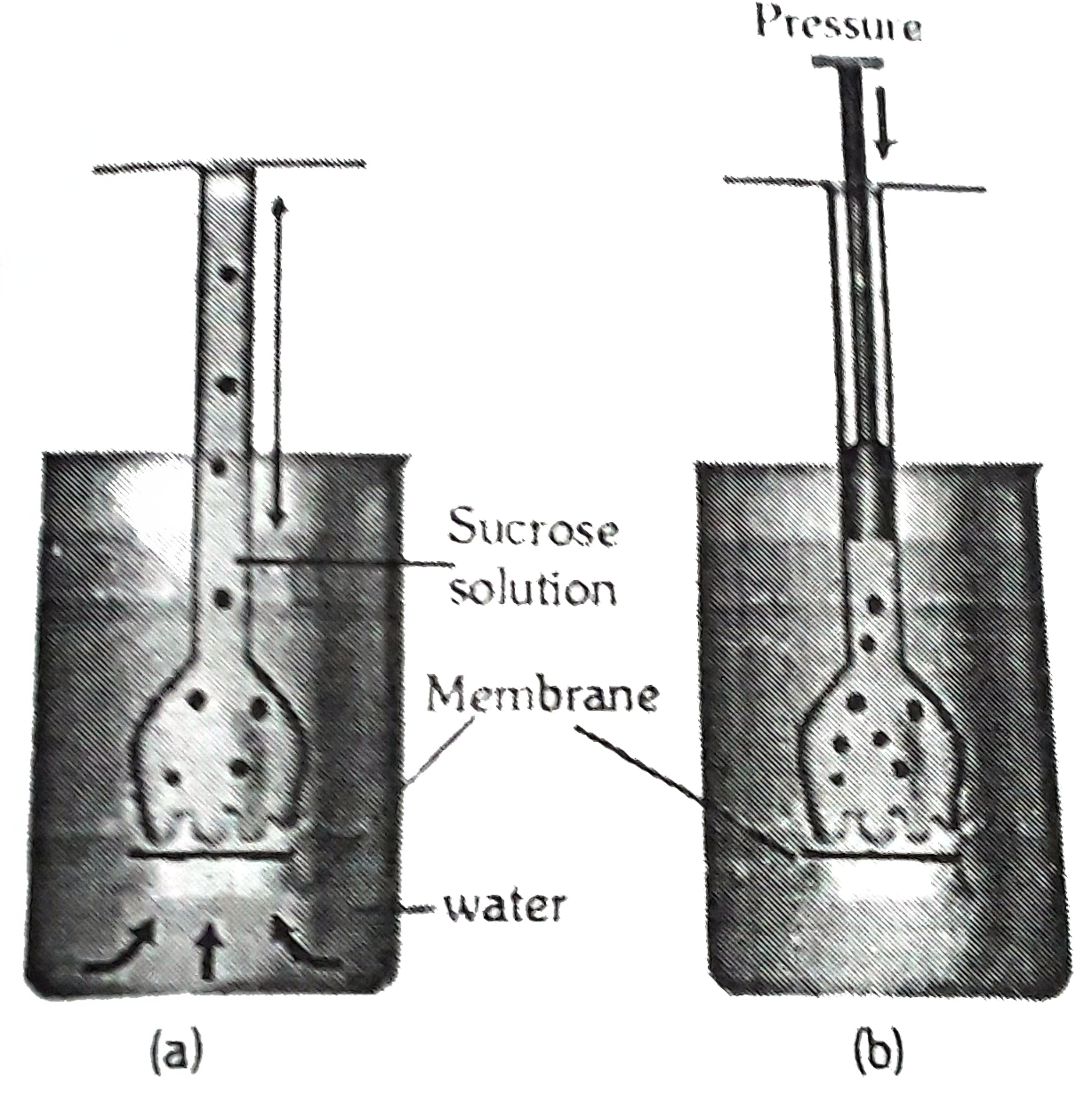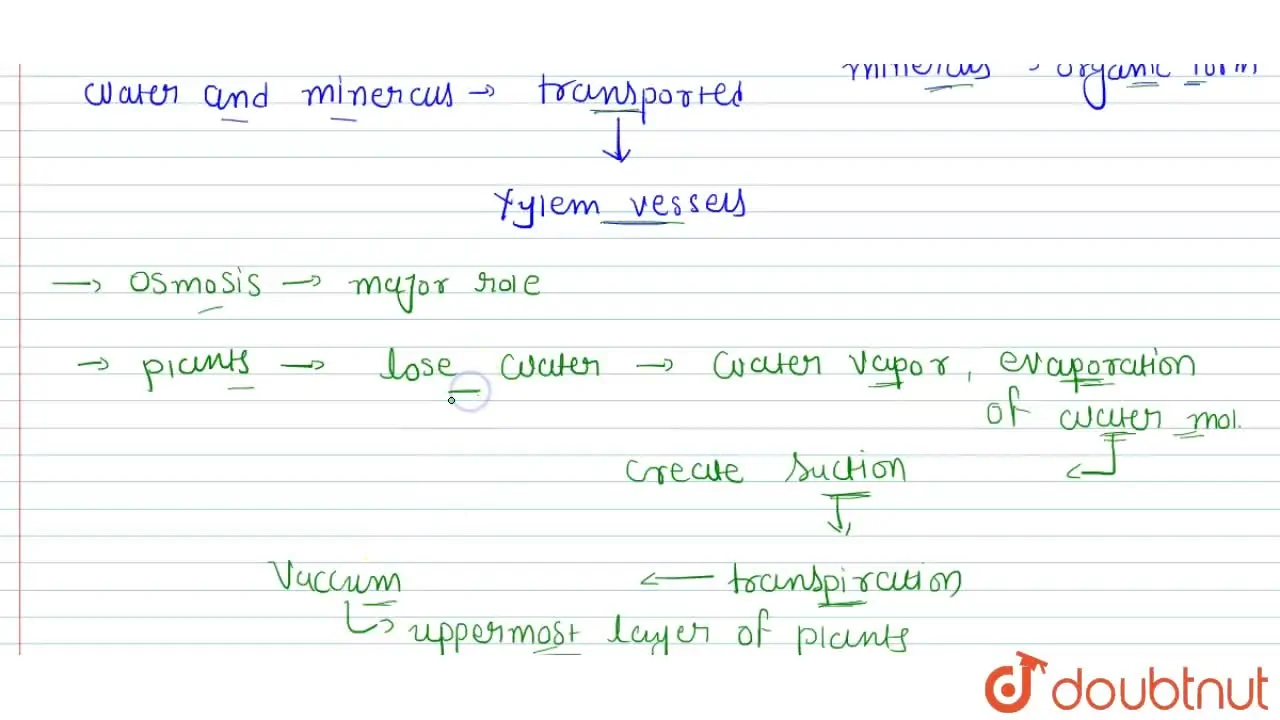How do plants absorb water ?Solution in Gujrati
Importance of roots in absorption : Roots absorb most of the water that goes into plants. The responsibility of absorption of water and minerals is more specifically the function of the root hairs. Roots hairs are present at the tips of the roots.
Root hairs are thin walled slender extensions of root epidermal cells that greatly increase the surface area for absorption.
Water is absorbed along with mineral solutes, by the root hairs, purely by diffusion.
Once water is absorbed by the root hairs, it can move deeper into root layers by two distinct pathways:
(1) Apoplast Pathway
(2) Symplast Pathway

Apoplast Pathway: The apoplast is the system of adjacent cell walls that is continuous throughout the plant.
Except at the casparian strips of the endodermis in the roots.
The apoplastic movement of water occurs exclusively through the intercellular spaces and the walls of the cells.
Note : Movement through the apoplast does not involve crossing the cell membrane. It is dependent on the gradient.
The apoplast does not provide any barrier to the water movement and water movement is through mass flow.
As water evaporates into the intercellular spaces or the atmosphere, tension develop the continuous stream of water in the apoplast.
Hence mass flow of water occurs due to the adhesive and cohesive properties of water.
Symplast Pathway: The symplastic system is the system of interconnected protoplasts.
Neighbouring cells are connected through cytoplasmic strands that extend through plasmodesmata.
Water has to enter the cells through the cell membrane, hence the movement relatively slower.
Movement is again down a potential gradient.
Symplastic movement may be aided by cytoplasmic streaming.
e.g., In cells of the Hydrilla leaf, the movement of chloroplast due to streaming is easily visible.
Related Playlists
- BOOK - KUMAR PRAKASHANCHAPTER - TRANSPORT IN PLANTS EXERCISE - Section-B Difference/Scientific Reasons6videos
TRANSPORT IN PLANTS
- BOOK - KUMAR PRAKASHANCHAPTER - TRANSPORT IN PLANTS EXERCISE - Section-C Definition/Explanation-terms/Location-Function25videos
TRANSPORT IN PLANTS
- BOOK - KUMAR PRAKASHANCHAPTER - THE LIVING WORLDEXERCISE - OBJECTIVE SECTION (FILL IN BLANKS)9videos
THE LIVING WORLD
Similar Questions

Study the given figure carefully and select the true and false statement(s) in this demonstration.
(a) Numerically this external pressure in figure (b) is equivalent to the osmotic potential of a solution, but the sign is opposite.
(b) Osmotic pressure is due to the solute concentration.02:45View SolutionDefine : Diffusion.
01:55View SolutionA .......... is a collection of pressed, dried and preserved plants mounted on ……..
02:22View SolutionHOW DO PLANTS ABSORB WATER?
06:11View Solutionखनिज लवणों का अवशोषण पौधे किस रूप में करते हैं?
01:35View SolutionHow is water absorbed by the roots of plants ?
02:13View SolutionHow do plants absorb water? Explain .
02:09View Solutionपौधे नाइट्रोजन का अवशोषण किस रूप में करते हैं ?
06:11View Solutionपादप फॉस्फोरस को किस रूप में अवशोषित करते हैं।
01:45View Solutionपादप नाइट्रोजन का अवशोषण किस रूप में करते हैं?
01:22:44View SolutionHow do plants absorb water? Explain .
01:44View Solutionதாவரங்களில் நீர் எவ்வாறு உறிஞ்சப்படுகிறது?
01:55View SolutionHow do plants absorb water|Mechanism of water absorption#!#Root pressure#!#Transpiration pull#!#Transpiration
38:09View Solutionউদ্ভিদ দ্বারা শোষিত জলের কতটা অংশ বাষ্পমোচন নির্গত হয় ?
01:32View Solutionखनिज लवणों का अवशोषण पौधे किस रूप में करते हैं?
02:04View Solution


